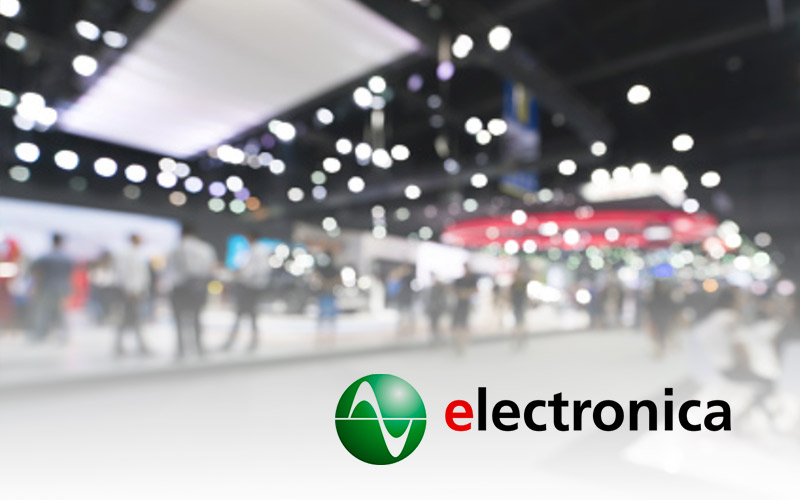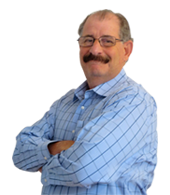Virtual Electronica 2020: New Products and an Outlook on Recovery
11/19/2020 //

Like so much else during this topsy-turvy year, Electronica 2020 (which was scheduled to take place at the Munich Trade Fair Centre from Nov. 9-12) has been organized digitally. Falk Senger, managing director of Messe München, said: “Due to COVID-19 and the associated travel restrictions we decided to relocate this year’s electronica into the virtual world. This way we can offer our customers an online platform during this challenging time while supporting exchange within this industry. In light of current COVID-19 conditions, we would not have been able meet our expectations with an in-person trade fair.”
Participants in the virtual event found solutions and products from more than 200 international exhibitors, a four-day forum and conference program and special events such as the CEO Roundtable and the startup funding program electronica fast forward.
One of the most anticipated elements of every Electronica is the show's CEO Roundtable. The Electronica 2020 roundtable, held virtually this year, featured executives providing their thoughts on the impact of COVID-19 on the electronics industry, as well as the industry’s long term strategic outlook.
Moderated by Joachim Hofer, Munich correspondent of the German business newspaper Handelsblatt, the executives on the roundtable were Gunther Kegel, CEO, Pepperl + Fuchs; Jean-Marc Chery, president and CEO, STMicroelectronics; Reinhard Ploss, president and CEO, Infineon Technologies; and Kurt Sievers, president and CEO, NXP Semiconductors.
Despite the pandemic the CEOs noted that the semiconductor industry is doing relatively well. Said NXP’s Sievers: “The recovery of the industry has probably been faster than most of us had anticipated. There are several reasons for this. One is that the end consumer demand for the type of products that we in the microelectronics industry are supporting has partially benefited from the pandemic.”
Sievers attributed this in part to people relying more on contactless payments and a car industry actually recovering faster than expected because people are trying to avoid public transport.
Jean-Marc Chery of STMicroelectronics believes that next year the market will come back to its traditional growth cycle, citing some verticals that are already doing well such as personal electronics, computers, infrastructure and the electrification of cars. There are also, he said, “good signs in Europe and America” for the industrial market.
One question tackled by the CEOs was whether we will we ever get back to pre-COVID reality. Pepperl + Fuchs’ Kegel said he doesn’t think we will ever go back to life before the crisis. “Either way the world will definitely be very different after COVID-19, so hoping that everything will just resettle and return to what it was before is not realistic.”
But he doesn’t think COVID-19 will be our largest problem in the coming years. Maybe, he wondered aloud, U.S.-China tension will be more worrying. He said that it was quite possible that with the new administration there may be more talking. But the root cause of the tension will stay, and it will depend on whether countries can resolve things in a diplomatic way, adding that the peaceful world of multi-lateral global trade was in danger. Additional tariffs and costs will lead to a loss of business for small and medium sized companies. “For us,” he said, “50 percent of what we do is still inside Europe, but the other 50 percent is outside, so this will impact us.”
In order to maintain multilateral trade, Kegel said companies are asking EU governments to help companies by not granting free access to the EU market to everyone without something in return.
On the subject of the U.S.-China tension and how the new U.S. president-elect might affect this, Reinhard Ploss of Infineon said that, as an industry, we need to avoid being dependent on single-source suppliers and that “we cannot depend on growth in China as a long-term formula for success.” While China will remain an important market, he cautioned that competing with local subsidized companies in China will not be a successful strategy.
NXP’s Sievers agreed with Infineon’s Ploss, suggesting that trade tensions are driving us “backward in globalization.” “I hope that the U.S. election results mean things will get more diplomatic. In general, I am hoping that following the election result in the U.S., things become a little bit more diplomatic in terms of how different parts of the world deal with each other. And I would also say that Europe needs to get on its feet and has to start levering much more as a joint union in how we play this game.
The following is a sampling of what was new, notable and of interest to engineers (in no particular order).
Vishay Intertechnology featured new component technologies under its new brand identity, The DNA of Tech. The company’s virtual exhibit showcased the latest additions to its portfolio of discrete semiconductors and passive electronic components.
Vishay solutions on display at virtual electronica included power inductors; high-frequency resistors and the new WFMx Power Metal Plate current sense resistors; low- and high-voltage MOSFETs; microBUCK and microBRICK DC/DC regulator modules; proximity and long-range sensors; and silicon carbide (SiC) Schottky diodes.
These components’ specifications will enable next-level automation in factories, the electrification of automobiles, 5G network technology, rapid expansion of the Internet of Things (IoT), and more.
Under the "Empower Your Design Innovation" theme, the Maxim Integrated Products virtual booth focused on Artificial Intelligence that can enhance a variety of applications. AI technology allows machines to see and hear, making sense of the world in ways that were previously impractical.
In the past, bringing AI inferences to the edge meant gathering data from sensors, cameras and microphones, sending that data to the cloud to execute an inference, then sending an answer back to the edge. This architecture works but is very challenging for edge applications due to poor latency and energy performance. As an alternative, low-power microcontrollers can be used to implement simple neural networks; however, latency suffers and only simple tasks can be run at the edge.
The MAX78000 low-power neural network accelerated microcontroller moves AI to the edge without performance compromises in battery-powered internet of things (IoT) devices. Executing AI inferences at less than 1/100th the energy of software solutions dramatically improve run-time for battery-powered AI applications while enabling complex new AI use cases. These power improvements come without compromise in latency or cost: the MAX78000 executes inferences 100x faster than software solutions running on low power microcontrollers, at a fraction of the cost of FPGA or GPU solutions.
By integrating a dedicated neural network accelerator with a pair of microcontroller cores, the MAX78000 overcomes these limitations, enabling machines to see and hear complex patterns with local, low-power AI processing that executes in real-time. Applications such as machine vision, audio, and facial recognition can be made more efficient since the MAX78000 can execute inferences at less than 1/100th energy required by a microcontroller. At the heart of the MAX78000 is specialized hardware designed to minimize the energy consumption and latency of convolutional neural networks (CNN).
Under the main theme "Engineering a Sustainable Future," Analog Devices (ADI) presented technologies from the fields of mobility, 5G connectivity, machine learning, automation and digital healthcare in the form of exhibits, demonstrations and conference contributions.
Analog Devices displays a large number of exhibits at its virtual booth, including technologies for building automation and for simpler and more robust communication in factory automation. In the area of frequency ranges required for 5G communication, ADI showed its latest developments in HF MEMS switches. With microstructures – essentially electromechanical relays that are manufactured in a semiconductor manufacturing process – switches with extremely low attenuation, low on-resistance in the signal path, small dimensions and high linearity are created that meet the requirements of ATE and measurement applications as well as communication designs. The exhibit shows how a precision measurement from DC to 44GHz can be carried out with just one MEMS switch.
Texas Instruments introduced a new family of low-noise DC/DC switching regulators with integrated ferrite-bead compensation. The TPS62912 and TPS62913 offer low noise of 20 µVRMS for frequencies ranging from 100 Hz to 100 kHz and low output-voltage ripple of 10 µVRMS, giving engineers the ability to remove one or more low-dropout regulators (LDOs) from their designs, reduce power losses by up to 76 percent and save 36 percent of board space.
Noise in the power supply is a key design challenge in many high-precision test and measurement, medical, aerospace and defense, and wireless infrastructure applications. A traditional low-noise power-supply architecture includes a DC/DC converter; a low-noise LDO such as the TPS7A52, TPS7A53 or TPS7A54; and an off-chip filter, such as a ferrite bead.
By integrating ferrite-bead compensation, the TPS62912 and TPS62913 use the ferrite bead already present in most systems as an effective filter against high-frequency noise, reducing the power supply output voltage ripple by approximately 30 dB and simplifying the power supply design. TI expects both devices to be available in volume production in the first quarter of 2021.
Statements of fact and opinions expressed in posts by contributors are the responsibility of the authors alone and do not imply an opinion of the officers or the representatives of TTI, Inc. or the TTI Family of Companies.
Murray Slovick

Murray Slovick is Editorial Director of Intelligent TechContent, an editorial services company that produces technical articles, white papers and social media posts for clients in the semiconductor/electronic design industry. Trained as an engineer, he has more than 20 years of experience as chief editor of award-winning publications covering various aspects of consumer electronics and semiconductor technology. He previously was Editorial Director at Hearst Business Media where he was responsible for the online and print content of Electronic Products, among other properties in the U.S. and China. He has also served as Executive Editor at CMP’s eeProductCenter and spent a decade as editor-in-chief of the IEEE flagship publication Spectrum.